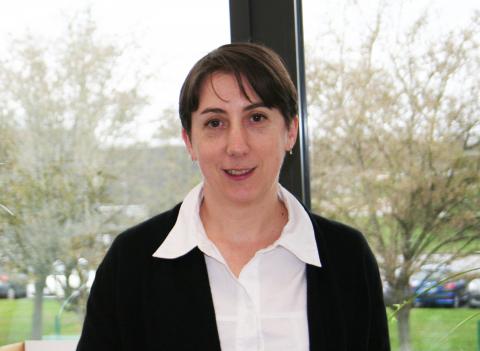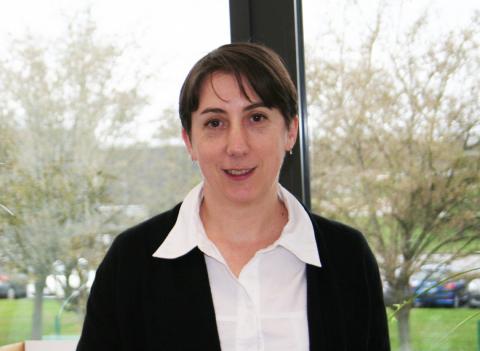
Sophie Szopa: Investigating atmospheric quality... millions of years ago!
Sophie Szopa is a researcher at the Laboratory for Sciences of Climate and Environment (LSCE – CEA / CNRS / Université Versailles – Saint-Quentin-en-Yvelines) at the Saclay campus near Paris. A chemist by training, she uses digital models to study how chemistry, climate and pollution interact in the atmosphere. In recent years, she has been focusing on the very distant past of the Earth's atmosphere in an effort to trace its evolution.
"The chemical compounds produced by human activities or vegetation react chemically to each other in the atmosphere," explains Sophie Szopa, a researcher at the Laboratory for Sciences of Climate and Environment. "This chemistry, driven by solar radiation, is very important: while it destroys certain greenhouse gases (e.g. methane), it also leads to the formation of pollutants (e.g. ozone)". She relies on digital climate models in her investigation of the past and future evolution of the atmosphere.
From monitoring air quality to research at LSCE
During her years as a student in environmental chemistry at Université Paris-Est Créteil, Sophie Szopa had no plans to enter research. In 2000, she obtained a postgraduate degree in air quality and promptly headed off to monitor the air in the city of Rouen. Her natural curiosity led her to research. After defending a doctoral thesis in 2003, she came to LSCE to do postdoctoral work. "My thesis was about the development of a chemistry schematic for the pollution model at Météo France, the national meteorological service, but my research at LSCE bore on an Earth system model," she remarks. She joined the French Alternative Energies and Atomic Energy Commission (CEA) in 2008.
Reconstructing past climates
At first, Sophie Szopa concentrated on contemporary problems of air pollution. In 2015, she decided to change her focus to the very distant past of the terrestrial atmosphere, seeking to learn more about the evolution of its oxidation capacity – i.e. its ability to eliminate compounds via chemistry – in past climates. "I switched my field of study after rereading a textbook reviewing the basics, starting with the evolution of the Earth's primitive atmosphere," she recalls, noting that few publications on this subject exist, but she believes that advances can be made "by capitalizing on LSCE's strengths."
Data from rocks and high-performance computers
Setting out to study and model chemistry's atmospheric role in the distant past, Sophie Szopa looked for quantifiable indicators in natural archives. "I teamed up with volcanologists to take samples of volcanic deposits millions of years old to obtain information about chemistry in the primitive atmosphere," she explains, pointing out that her research only makes sense if conducted in collaboration with other scientists in complementary disciplines. "At Saclay, I work on LSCE's Climate Modeling team, with experts in digital modeling in paleo-environmental contexts. We collaborate with other scientists at LSCE, including an engineer specialized in high-performance computing, a volcanologist and a researcher investigating the organic compounds emitted by vegetation. I'm also in regular contact with colleagues specialized in atmospheres, environments, and spatial observations at the Atmospheres Laboratory, Backgrounds, Space Observations (LATMOS – CNRS / Université Versailles – Saint-Quentin-en-Yvelines / Sorbonne Université) to discuss matters relative to stratospheric dynamics."
Future climates
The main author of a chapter in the next IPCC assessment report (2021), Sophie Szopa also works with experts from all over the world. Her work consists of "reading a great deal of literature on a given subject – in my case, interactions between pollution and climate – to assess the current state and reliability of scientific knowledge. The objective is to extract information and present it to governmental decision-makers." Sophie Szopa and 12 of the 200 IPCC report authors have bonded in the course of their collaboration. "We are all trained in atmospheric chemistry, but differ in our cultural background and working methods. This experience has been highly enriching, both intellectually and from the human perspective."

